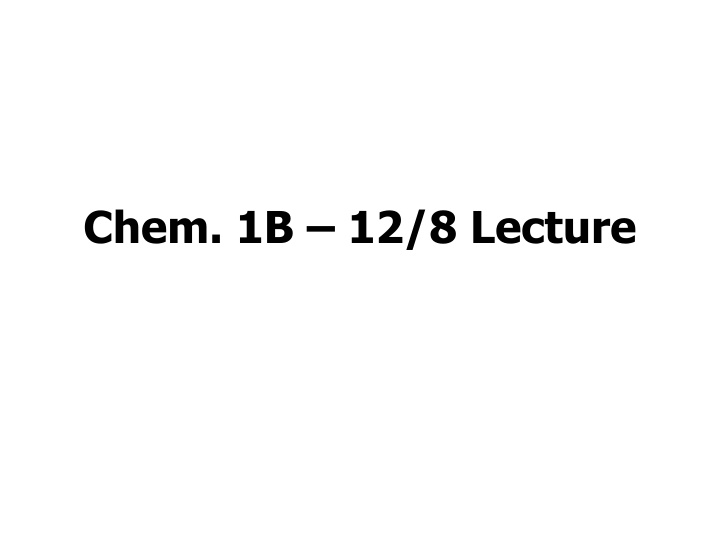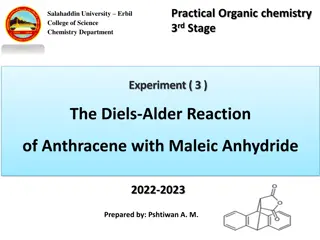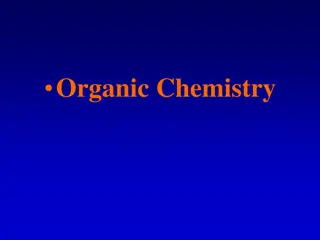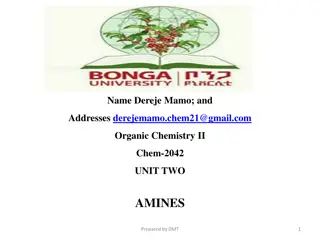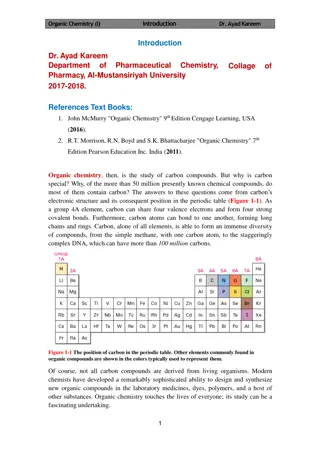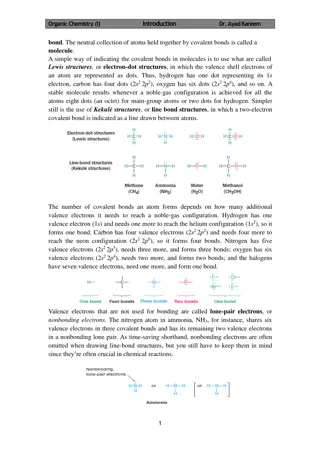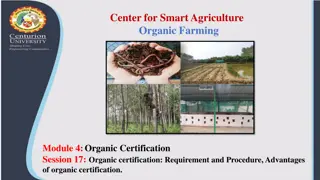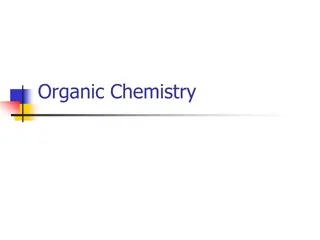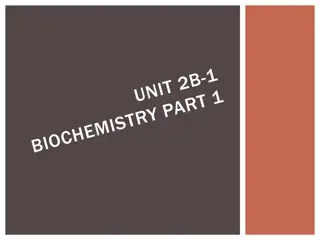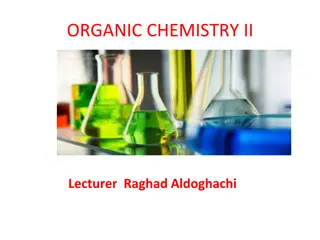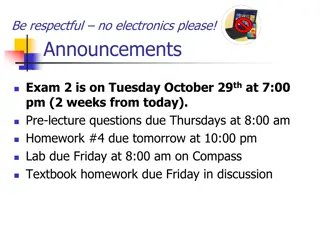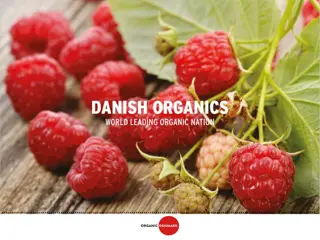Organic Chemistry Lecture Announcements and Review Questions
Lecture announcements include details about an upcoming final exam and points distribution. Review questions focus on organic chemistry topics such as isomerism, functional groups, and carbon bonding in alkanes. The questions cover structures, properties, and reactions of organic compounds. Students are reminded of an assignment deadline and are provided with information about the exam format and location.
Download Presentation

Please find below an Image/Link to download the presentation.
The content on the website is provided AS IS for your information and personal use only. It may not be sold, licensed, or shared on other websites without obtaining consent from the author.If you encounter any issues during the download, it is possible that the publisher has removed the file from their server.
You are allowed to download the files provided on this website for personal or commercial use, subject to the condition that they are used lawfully. All files are the property of their respective owners.
The content on the website is provided AS IS for your information and personal use only. It may not be sold, licensed, or shared on other websites without obtaining consent from the author.
E N D
Presentation Transcript
Announcements I Mastering Ch. 20 assignment (Organic Chemistry) due 12/10 After that (and the hand grading problem), I will assign class points (probably some bonus to reflect some bad homework problems) Final Exam Thurs., 12/15 12:45 to 2:45 42 multiple choice questions (2 bonus, but no work out type) Using SC-982E Scantron form (Blue version used previously)
Announcements II Final Exam cont. About 4 questions each for Ch. 14, 15, 17, and 24 and about 8 questions each for Ch. 16, 18, and 20 Less calculation intensive than exams 1 and 2 Sect. 7 in Lab room (Sequoia 426)
Announcements III Today s Lecture Organic Chemistry (Ch. 20) Questions Review Teaching Evaluations
Chapter 20 Organic Chemistry Questions 1. The carbon skeleton structure for 3-bromo-1- butene is: Br Br Br 2. What isomers, if any, does 3-bromo-1-butene have? a) Cis and trans b) optical c) none
Chapter 20 Organic Chemistry Questions 3. Which of the following are isomers of n- pentane? 4. Will the above isomer be more or less volatile than n-pentane? 5. An unknown alkene is reacted with Br2 and the product is Br What was the alkene? Br
Chapter 20 Organic Chemistry Questions 6. Which compound has cis- trans- isomerism? OH Br Br 7. Given the compound below, what functional groups does it have? O CH3 H2 N a) alcohol d) ketone and amine 8. Is that compound polar or non-polar? b) amine c) alcohol and amine e) ketone and alcohol
Chapter 20 Review Chapter 20 Carbon Bonding Know number of bonds formed by carbon in organic compounds Know hybridization and geometries (sp3, sp2, and sp for alkanes, alkene Cs, and alkyne Cs) Chapter 20 Alkanes Know full structure and carbon skeleton representations Know names of alkanes (linear chain up to 10 carbons)
Chapter 20 Review Chapter 20 Alkanes cont. Understand how a branched alkane is an isomer (plus how to name mono- and di-substituted alkanes) Be able to identify optical isomers and chiral carbons (not just for alkanes) Chapter 20 Alkenes Be able to identify alkenes + know carbon skeleton representation Be able to give names of linear and branched alkenes
Chapter 20 Review Chapter 20 Alkenes cont. Be able to identify cis- and trans- isomers and alkenes without cis-/trans- isomers Know effect of double bonds on melting points Chapter 20 Alkynes Be able to identify, name and recognize carbon skeleton structure Chapter 20 Reactions Be able to predict products and balance stoichiometry for combustion reactions
Chapter 20 Review Chapter 20 Reactions cont. Be able to predict products and balance stoichiometry for combustion reactions Know halogenation reactions of alkanes Be able to predict products of hydrogenation and halogenation reactions involving alkenes (both + X2 and + HX types) Know differences between alkene reactions and other reactions
Chapter 20 Review Chapter 20 Aromatics Be able to identify, name and recognize carbon skeleton structure (up to two substituents plus common substituents mentioned) Chapter 20 Functional Groups Be able to identify alcohol, ether, ketone, carboxylic acid, and amine functional groups Know which are functional groups are polar
